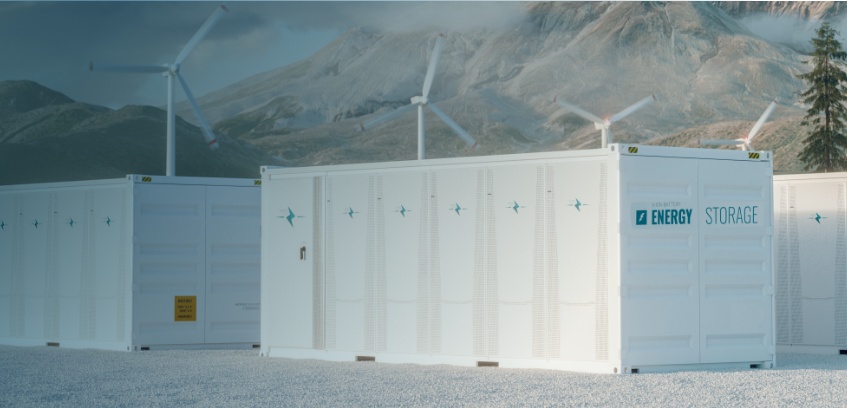Energy Storage System Companies Are Racing to Scale Production

Originally posted on Celestica’s Blog
As the global renewable energy market continues to grow rapidly, so too does the demand for Energy Storage Systems (ESS) that improve grid resiliency, lower the costs of meeting peak power demand, and generate new revenue streams for individuals and organizations across the industry. The race is on to build and deploy innovative ESS solutions that will power the zero-emission technologies of today and tomorrow. The winners will include those battery storage OEMs who quickly shift their focus from developing highly customized products to redesigning their solutions for mass production.
Success requires overcoming a myriad of challenges including a shift in preferred battery chemistries, the industry’s transition to long-duration storage, time-to-market and cost pressures as well as navigating global supply chain constraints.
No time to waste
The need to ramp up mass production is immediate. In the U.S. alone, 345 megawatts (MW) of new energy storage systems were brought online in the second quarter of 2021. According to the U.S. Energy Storage Monitor report, that represents a 162% increase over the time period last year, making Q2 2021 the second-largest quarter on record by MW for U.S. energy storage additions.
“As the industry matures, it’s no longer a matter of creating customized hardware for each customer, but instead designing products for the core of the market,” says Anton Fischer who leads Technical Business Development, Industrial and Smart Energy at Celestica. “The trend we are seeing in the ESS industry towards modular, scalable systems is similar to what we’ve seen in the solar industry over the last decade.”
Fischer speaks from first-hand experience. He remembers when the solar market shifted from large inverters with a degree of customization to mass producing smaller inverters that could easily be swapped out with replacements and repaired or refurbished at the factory.
He sees the same market forces driving the evolution of the ESS industry in utility scale deployments. Just as complex and customized solar energy grid inverters became more standardized, energy storage devices for utility applications are becoming more flexible, scalable and predictable in their sizes, which provides many benefits in deployment and maintenance in the field.
“The costs associated with operations, maintenance, and testing services are significant,” adds Fischer. “For example, if ESS manufacturers can help their customers lower those costs by re-engineering their products to eliminate the need to fly an engineer to the site on 24 hours’ notice, they will substantially improve the economics of the distributed energy source.”
Scaling your ESS solutions from prototype to production
While some storage applications still require customized design, the majority will be met by modular products and solutions in the very near future. As a result, many manufacturers are quickly approaching an inflection point in which they will need an experienced partner like Celestica to help them scale quickly and cost competitively.
Working with a trusted partner on non-core activities from the drawing board to full-scale production and support enables OEMs to redeploy key assets and resources to focus on agile growth. Designing and building the product right the first time is critical. Failure to do so at even one phase of the product development lifecycle inevitably causes costly delays that place the company at a significant competitive disadvantage.
Re-engineering ESS solutions to scale production is just step one. Kim Aube, Celestica’s Director of Global Business Operations for Industrial and Smart Energy says OEMs face severe supply chain constraints and material shortages that threaten to delay delivery of their products to customers by several months.
“OEMs look to Celestica to help de-risk their supply chains by redesigning them to meet today’s demands. We provide a firm forward-looking strategy so that they can capitalize on new markets and keep their costs down,” says Aube. “Many remain dependent on materials coming from Asia, especially battery cells, and with sea freight transit delays and premiums frequently at ~5x pre-Covid rates, there is a race to regionalize.”
With more than a decade of experience in the renewable energy industry, Celestica’s Industrial and Smart Energy team understands the market dynamics and supply chain challenges. Celestica’s proven approach, global network and global supply chain purchasing power enables its customers to proactively manage supply constraints, shorten lead-times, and meet time-to-market objectives.
“At the same time, we also help our customers prepare for what’s ahead,” says Aube. “Understanding pending legislation, navigating trade compliance changes and helping our customers to meet stringent industry standards and certification requirements, including UL 9540, helps ensure that they are successful every step of the way.”
If the world is to realize the vision of enabling all consumers and businesses to tap into intermittent renewable energy sources like solar panels and wind turbines for their power needs 24/7/365, the industry must develop and implement long-term energy storage solutions that provide reliable electricity reserves even when the sun isn’t shining or the wind isn’t blowing.












